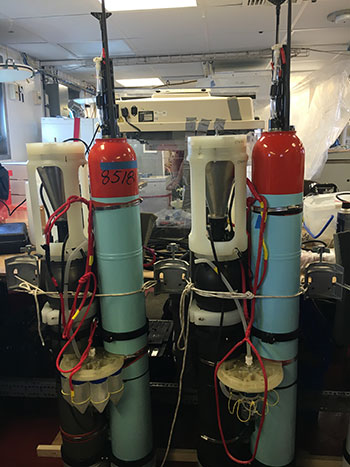 The ocean’s biological carbon pump occurs at very fast time scales, so it has been difficult to study the various environmental dynamics influencing its processes. Determining whether the carbon pump is strengthening or weakening – and why – would require ongoing monitoring that is impractical to do for humans on a ship.
The ocean’s biological carbon pump occurs at very fast time scales, so it has been difficult to study the various environmental dynamics influencing its processes. Determining whether the carbon pump is strengthening or weakening – and why – would require ongoing monitoring that is impractical to do for humans on a ship.
That is where robotic technology comes in. Berkeley biogeochemist Jim Bishop invented the optical sedimentation recorder (OSR), an instrument designed to catch organic matter sinking vertically and funnel it to a glass platform. A camera below the platform takes images at regular intervals, and those images can determine the nature of the matter that settles on the glass stage.
The OSRs typically hang down from surface buoys, but research has indicated that such tethering makes them susceptible to a sideways pull that affects the quantity of particles collected. Read More »
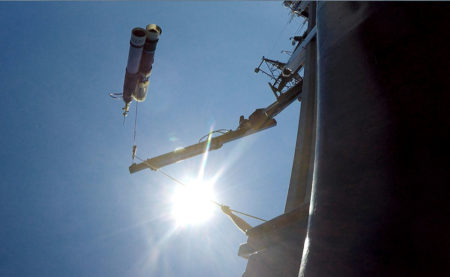 At 2:27 p.m. today, the first Carbon Flux Explorer was deployed, and if all goes well, we will see it again in about 24 hours. Its entry into the water did not come with the cheers I had expected. I was told that this was because many of the researchers had done this before, and there was still a great deal of work to do after the launch. (I still clapped.)
At 2:27 p.m. today, the first Carbon Flux Explorer was deployed, and if all goes well, we will see it again in about 24 hours. Its entry into the water did not come with the cheers I had expected. I was told that this was because many of the researchers had done this before, and there was still a great deal of work to do after the launch. (I still clapped.)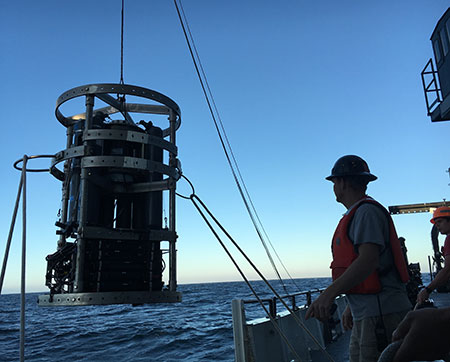 It’s not a great thing when the CTD (Conductivity, Temperature and Depth) Rosette bumps into the hull of the ship, as it did on one of the launches today.
It’s not a great thing when the CTD (Conductivity, Temperature and Depth) Rosette bumps into the hull of the ship, as it did on one of the launches today. 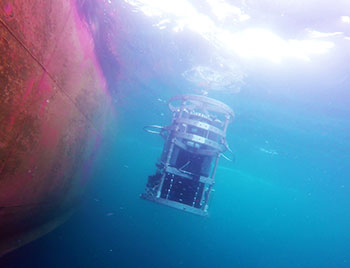 As I started writing this, an array of sensors was taking measurements from the surface to near the bottom of the Santa Cruz Basin. They are being tested with a CTD (Conductivity, Temperature and Depth) Rosette device, which will help researchers characterize the distribution of biomass at different water depths.
As I started writing this, an array of sensors was taking measurements from the surface to near the bottom of the Santa Cruz Basin. They are being tested with a CTD (Conductivity, Temperature and Depth) Rosette device, which will help researchers characterize the distribution of biomass at different water depths. 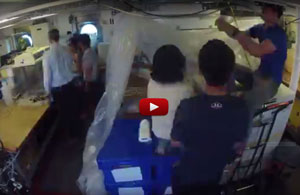 The time was 5:55 a.m., and I was wondering whether I should wake up Berkeley Lab engineer Tim Loew, who had nodded off at the table in the middle of assembling a polarizer for the robotic float. I wanted to let him sleep long enough for me to reach for my camera, but he woke up before I got the shot. Maybe next time.
The time was 5:55 a.m., and I was wondering whether I should wake up Berkeley Lab engineer Tim Loew, who had nodded off at the table in the middle of assembling a polarizer for the robotic float. I wanted to let him sleep long enough for me to reach for my camera, but he woke up before I got the shot. Maybe next time. 